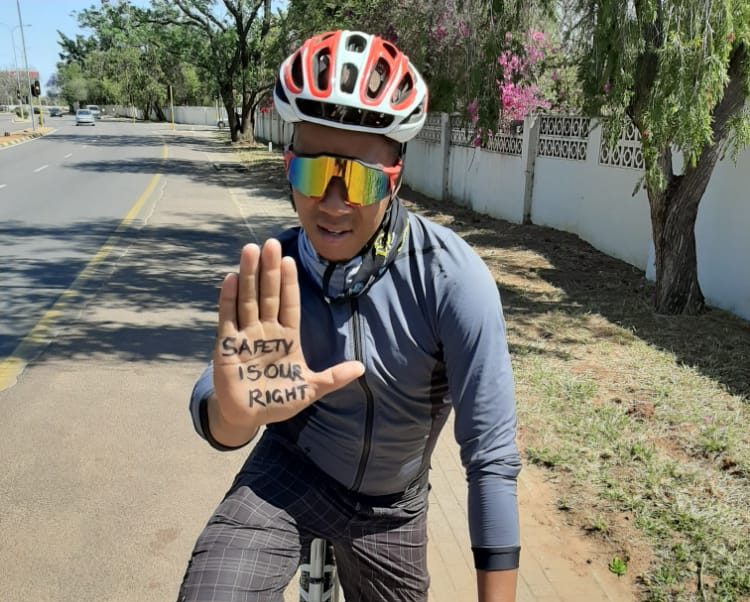
The tagline of this year’s #CommitToAct campaign is “Our roads, our right” and builds on the concept that safe roads and journeys are the right of every citizen, and it is the responsibility of our authorities to ensure that those rights are upheld.
The idea of safety as a right is not new. While safety on the roads is not explicitly listed in the Universal Declaration of Human Rights, Article 3 states that “everyone has the right to life, liberty and security of person,” and later articles refer to the rights to work, education, and leisure, all of which are enabled by the ability to make safe journeys. In fact, the human right aspect of road safety has been mentioned more than once by the UN High Commissioner for Human Rights. At the launch of the Road Safety Strategy for UN personnel in 2019, Commissioner Michelle Bachelet said, “I also want to emphasise that road safety is itself a human rights question. … States are obliged to take all reasonable steps to protect the right to life, personal security, health and development. People’s enjoyment of all these rights can be directly enhanced by States’ policies on road safety.”
In line with the full Sustainable Development Goal (SDG) agenda, road safety is increasingly seen within the context of the other issues it intersects. The new UN Resolution on Improving Global Road Safety states that “the Sustainable Development Goals and targets are integrated and indivisible.” The content of the resolution, which incorporates environmental, health, and equality concerns, goes beyond the simple goal to reduce fatalities. It addresses the rights of individuals not just to not be killed in a road crash but to live full, productive lives as set out in the Universal Declaration of Human Rights and the SDGs. Road crashes and injuries impede our ability to live our rightful lives and our rights to education and decent work, to family life and health. It’s not just crashes that are affecting us, it’s the fear and risks too: the unsafe roads where children walk to school, the harassment on public transport that push women to make risky journeys or to stay at home, the asthma attack that could be fatal resulting from the dirty air.
This was a theme that came through in the Alliance’s own report The Day Our World Crumbled: The Human Cost of Inaction on Road Safety, launched in Stockholm, in February. Analysis of the 6,000-plus responses from around the world showed how safe mobility and safer roads are an enabler for other rights, and that serious injuries and fatalities undermine citizens’ opportunities for education and employment.
The report was co-written with Accountability International, a human rights advocacy organization working across Africa. In a recent blog about the report, Phillipa Tucker, Director of Research, Development, and Resourcing at Accountability says this:
“So let’s talk road safety as a human rights issue and the Sustainable Development Goals, and not just the targets that have the word “road” or “transport” in them; think about the goals.
• The right to be free of poverty and hunger (Goal 1 and 2)
• The right to life (Goal 3: Good health and well-being)
• The right to education (Goal 4: Quality education)
• The right to freedom of movement (How many women have to choose between walking along a dangerous road, where they risk being hit by a car, or across a dark field, where they risk being raped?) (Goal 5: Gender equality)
• The right to safety and security (Goal 16: Peace, justice, inclusion, reduced violence, and promoting the rule of law)
• The right to the highest attainable standard of health (Goal 3: Good health and well-being)
• The right to have a family (17% of respondents reported losing a direct family member: 17%! A child, a parent, a sibling, or a life partner. Not cousins, not grandparents, a direct family member). One woman wrote that her husband was killed in a car crash six weeks after their wedding, when she was thirty years old. She had reached forty years old and never met another man she loved and so had never had a chance to have the children she and her husband had planned.
• The right to bodily integrity (basically the choice to do what I want with my body) and to walk and travel in safe places, whether a person of color or lesbian, gay, trans, or a woman (Goals 5 and 10)
• The right to safe and paid work and a country with economic opportunities (Goal 8: Decent work and economic growth)
• Safe spaces (Goal 11: Sustainable cities and communities)”
When we start to see our safe journeys as a right, we place road safety in the broader spectrum of health, mobility, and a multitude of other rights, and we open up the possibility of collaboration with other sectors and partners. We need to change the way that people see their roads and journeys. Are they designed for cars or are they designed for people? Do they uphold their rights or do they violate them? Are road and transport policies respecting the rights of citizens to work, education, equality, and safety?
#CommitToAct calls on government leaders to take hold of their responsibilities to uphold the rights of their citizens: to commit to actions that will protect road users, especially vulnerable ones, and ensure all of our rights to “life, liberty, and security.”